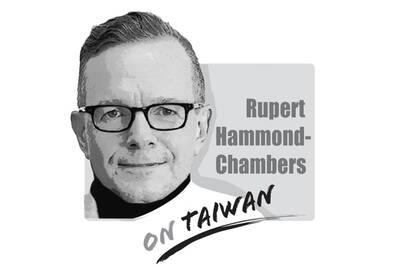The recent anti-China disturbances in Vietnam have inadvertently laid bare a very weak point in the policies of President Ma Ying-jeou’s (馬英九) government. Its rapprochement with China has — in the eyes of many observers — blurred the distinction between Taiwan and China, leading some Vietnamese to attack Taiwan-owned companies under the assumption that they were Chinese.
It of course does not help that the government in Taipei calls itself the “Republic of China,” and Ma himself continues to emphasize that Taiwan and “the mainland” are part of “one China.”
The Vietnamese demonstrators could also be forgiven that they are confused when the main airline flying from Hanoi to Taipei is named “China Airlines,” and one of the bigger investors from Taiwan carries the title “China Steel Corp.”
So, it is clear that the confusion is primarily caused by the policies of the government in Taipei.
However, it is also important to address the immediate cause that triggered the Vietnamese protests: Chinese aggression against Vietnam.
Earlier this month, China moved a huge oil drilling platform to disputed waters near the Paracel Islands (Xisha Islands, 西沙群島), well within the 321km exclusive economic zone claimed by Vietnam in accordance with the international Law of the Sea.
China made this move after a number of prior provocative moves in the region, including the declaration of an air defense identification zone over the disputed Diaoyutai Islands (釣魚台群島) — known as the Senkakus in Japan — in the East China Sea in November last year, the restriction of fishing by other nations in international waters in the South China Sea in January of this year and harassment against Vietnamese fishermen and atoll groups claimed by the Philippines.
The dispatch of the oil platform was called “extremely provocative” by US Secretary of State John Kerry in a telephone call to his Chinese counterpart Wang Yi (王毅) on Tuesday last week.
So, what has been the reaction from the government in Taipei to this pattern of assertiveness from the Chinese side?
On Thursday last week, Minister of Foreign Affairs David Lin (林永樂) was quoted as saying that the Chinese Nationalist Party (KMT) government had rejected a call for cooperation from Beijing, but at the same time pledged “not to take sides” in the dispute.
However, the government did not say a word on the provocative steps taken by China in sending an oil rig to the area and deploying almost 100 coast guard and People’s Liberation Army Navy vessels to “protect” the oil rig from Vietnamese ships.
The peculiar thing is that the Ma administration itself still claims the Paracels and even aligns itself with Beijing in claiming everything within the “nine-dash line,” which basically covers just about all of the South China Sea.
So, with this kind of ambivalent policy emanating from Taipei, one cannot fault other countries and people who wonder which side Taiwan is on.
What should Taipei do to clarify its position and prevent a situation in the future in which its businesses in Vietnam or any other country are mistaken for being Chinese?
It must emphasize Taiwanese identity and clearly express that there is a free and democratic Taiwan that is not associated with a repressive and expansionist People’s Republic of China.
For starters, China Airlines should be renamed to show that it is a Taiwanese airline, while state-owned companies like China Steel should proudly carry Taiwan’s name.
Chen Mei-chin is a commentator based in Washington.
The gutting of Voice of America (VOA) and Radio Free Asia (RFA) by US President Donald Trump’s administration poses a serious threat to the global voice of freedom, particularly for those living under authoritarian regimes such as China. The US — hailed as the model of liberal democracy — has the moral responsibility to uphold the values it champions. In undermining these institutions, the US risks diminishing its “soft power,” a pivotal pillar of its global influence. VOA Tibetan and RFA Tibetan played an enormous role in promoting the strong image of the US in and outside Tibet. On VOA Tibetan,
Sung Chien-liang (宋建樑), the leader of the Chinese Nationalist Party’s (KMT) efforts to recall Democratic Progressive Party (DPP) Legislator Lee Kun-cheng (李坤城), caused a national outrage and drew diplomatic condemnation on Tuesday after he arrived at the New Taipei City District Prosecutors’ Office dressed in a Nazi uniform. Sung performed a Nazi salute and carried a copy of Adolf Hitler’s Mein Kampf as he arrived to be questioned over allegations of signature forgery in the recall petition. The KMT’s response to the incident has shown a striking lack of contrition and decency. Rather than apologizing and distancing itself from Sung’s actions,

US President Trump weighed into the state of America’s semiconductor manufacturing when he declared, “They [Taiwan] stole it from us. They took it from us, and I don’t blame them. I give them credit.” At a prior White House event President Trump hosted TSMC chairman C.C. Wei (魏哲家), head of the world’s largest and most advanced chip manufacturer, to announce a commitment to invest US$100 billion in America. The president then shifted his previously critical rhetoric on Taiwan and put off tariffs on its chips. Now we learn that the Trump Administration is conducting a “trade investigation” on semiconductors which
By now, most of Taiwan has heard Taipei Mayor Chiang Wan-an’s (蔣萬安) threats to initiate a vote of no confidence against the Cabinet. His rationale is that the Democratic Progressive Party (DPP)-led government’s investigation into alleged signature forgery in the Chinese Nationalist Party’s (KMT) recall campaign constitutes “political persecution.” I sincerely hope he goes through with it. The opposition currently holds a majority in the Legislative Yuan, so the initiation of a no-confidence motion and its passage should be entirely within reach. If Chiang truly believes that the government is overreaching, abusing its power and targeting political opponents — then